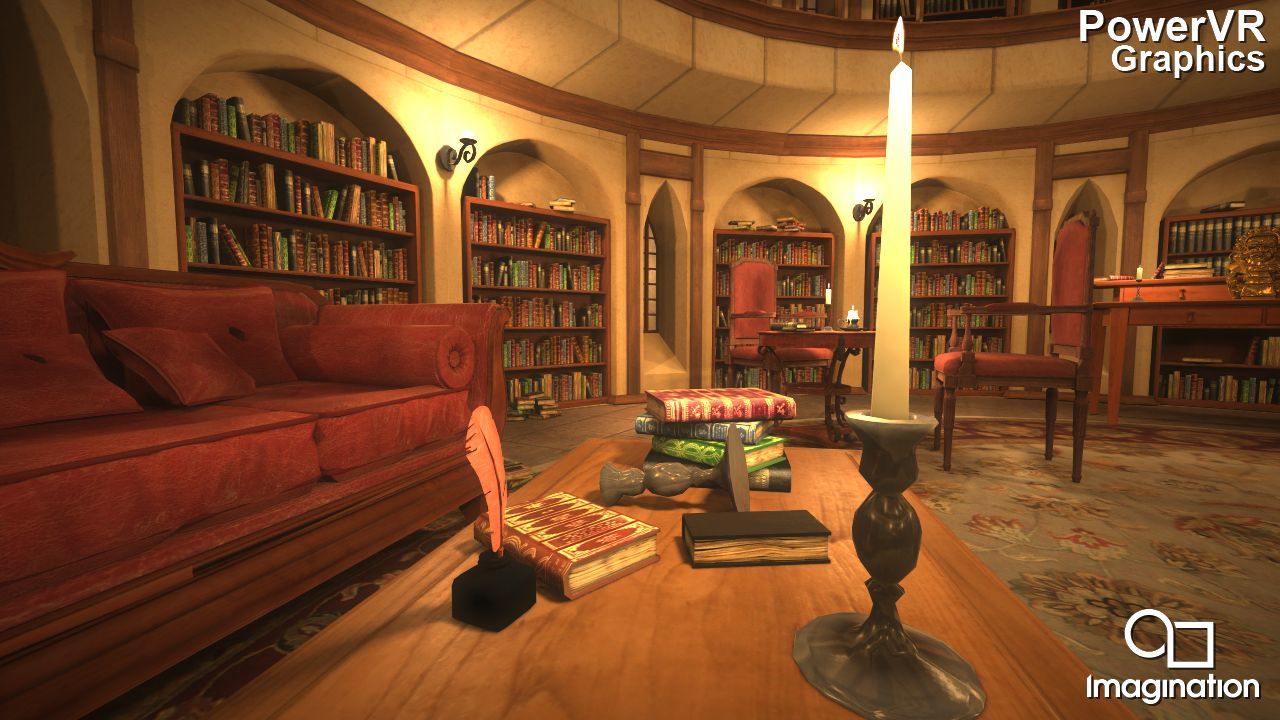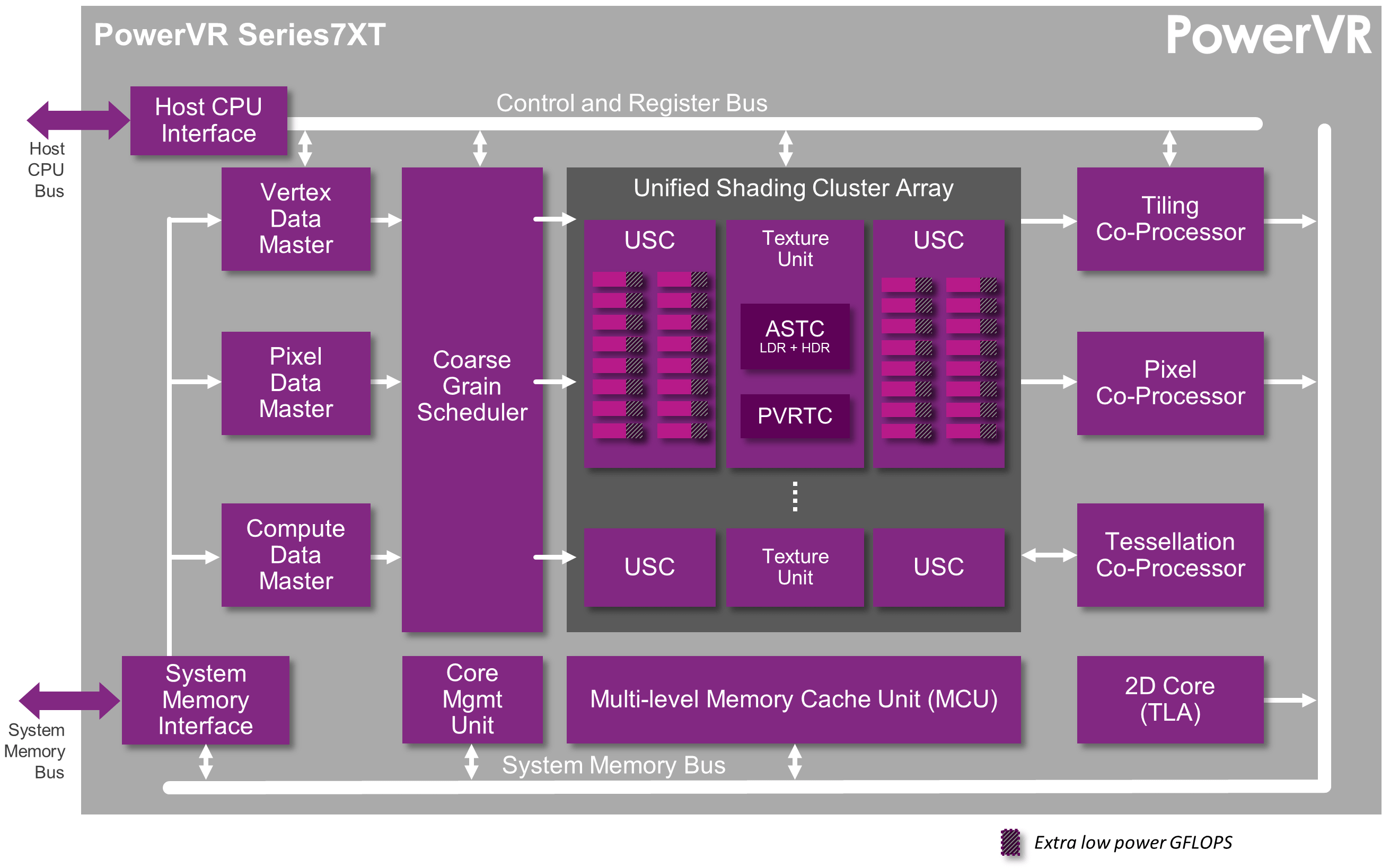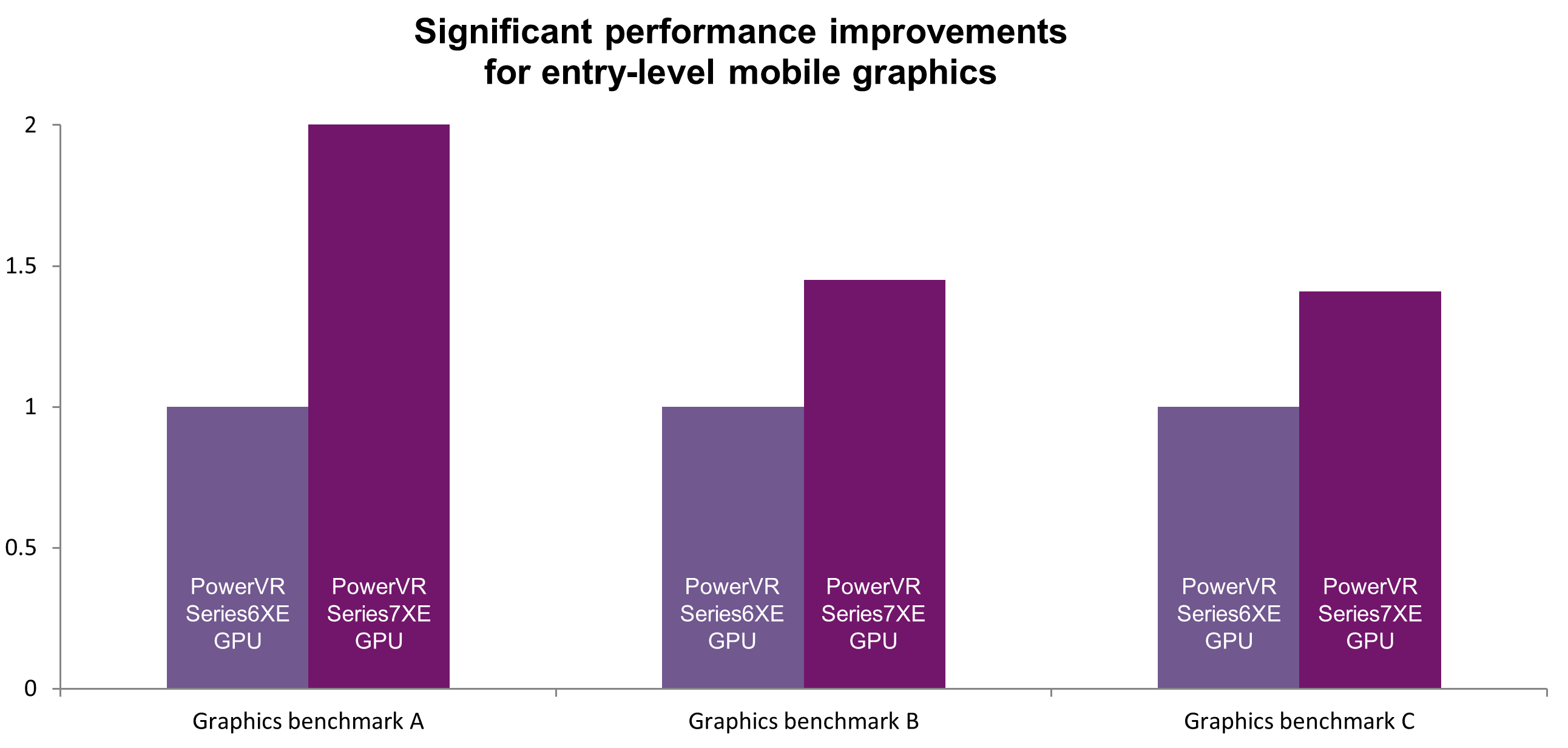Affiliate links on Android Authority may earn us a commission. Learn more.
Imagination announces two new PowerVR GPU families, the Series7XT and the Series7XE
November 10, 2014

The new Series7 architecture is divided into two families: the Series7XT and the Series7XE. The XT family offers high performance with efficiency for mid-range and high-end devices, while the XE family targets entry-level devices including IoT, wearables, affordable smartphones, and tablets.
While the XT family is all about high performance, the XE family is about achieving as much as possible, in as small a space as possible.
Although the GPUs in the XT and XE families are based on the same Series7 architecture, one is optimized for the maximum performance per mW of power, while the other targets applications which need the maximum performance per square millimeter.
The PowerVR Series7XT GPUs are up to 60% faster when compared to Series6XT GPUs using the same clock speeds and cluster configurations. The new GPUs include support for hardware tessellation, a prerequisite for GPUs that support Google’s new Android Extension Pack (AEP) graphics in Android Lollipop, and can be built to support GPU compute configurations for High Performance Compute (HPC) and supercomputing applications. As well as OpenGL ES 3.1 & AEP, XT GPUs offer support for OpenGL 4.4, OpenCL 1.2 FP, RenderScript, and DirectX 11.

There are five GPUs in the Series7XT GPU family, each with a different number of shading clusters and ALU cores:
- PowerVR GT7200: 2 shading clusters, 64 ALU cores
- PowerVR GT7400: 4 shading clusters, 128 ALU cores
- PowerVR GT7600: 6 shading clusters, 192 ALU cores
- PowerVR GT7800: 8 shading clusters, 256 ALU cores
- PowerVR GT7900: 16 shading clusters, 512 ALU cores
While the XT family is all about high performance, the XE family is about achieving as much as possible, in as small a space as possible. The key to the XE family is the flexibility it offers designers. Different classes of device require different features. wearables need a different feature set to say 4K TVs. With the Series7XE GPUs Imagination has created a core set of features along with optional packs for specific markets.
At the moment the PowerVR Series7XE family includes two GPUs:
- PowerVR GE7400: 1/2 shading cluster, 16 ALU cores
- PowerVR GE7800: 1 shading cluster, 32 ALU cores

What is interesting is that Imagination says that the PowerVR G7400 is the world’s smallest GPU which supports the Android Extension Pack for Android 5.0 Lollipop. In other words it is the smallest GPU in the world that supports OpenGL ES 3.1, fragment shaders and tessellation. Impressive!
The GPUs also support several compression technologies (like static texture compression and frame buffer compression) that reduces memory bandwidth usage. Whenever memory bandwidth is reduced, the power consumption is also reduced. These compression technologies enable devices like tablets and 4K TVs, which may have limited memory bandwidths, to achieve high fillrates.
According to Imagination the design for these GPUs is complete and the company is already working with its silicon partners. We can expect to see SoCs with Series7XT and Series7XE GPUs sometime during late 2015 or early 2016.
Thank you for being part of our community. Read our Comment Policy before posting.